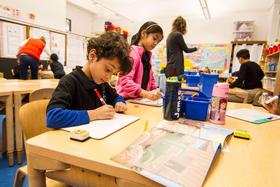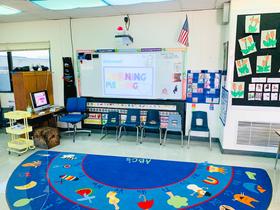Measuring Student Success in Public Schools: Beyond Test Scores
As public schools navigate shifting educational landscapes in 2025, it is imperative to reassess how we measure student success. Traditional reliance on standardized test scores provides only a narrow lens on student achievement. For parents, students, and educators alike, recognizing broader indicators of success in public schools offers a more complete and equitable view of school performance and student growth.
Why We Must Move Beyond Test Scores
Standardized tests historically served as the dominant metric for student and school performance. However, research shows several limitations:
Test scores often fail to capture growth, engagement, and other non-academic dimensions of success.
They correlate strongly with external factors such as socioeconomic status and family background rather than purely reflecting school quality.
Recent commentary suggests test-based assessments may even derail student engagement and learning if overemphasized. hechingerreport.org
Thus, measuring student success in public schools demands a more holistic, multi-dimensional approach. The goal is not to eliminate test scores entirely but to integrate them into a broader framework of indicators.
Key Dimensions of Student Success in Public Schools
Below is a summary table of dimensions that public schools should consider when measuring student success:
| Dimension | What it captures | Why it matters for public schools |
|---|---|---|
| Academic growth & achievement | Progress over time, mastery of fundamentals | Reflects learning trajectories, not only performance at one time point |
| Student engagement & mindset | Curiosity, motivation, perseverance | Engaged learners are more likely to succeed long term |
| Social-emotional development | Self-regulation, collaboration, wellbeing | These skills support academic success and life readiness |
| Postsecondary and career readiness | Graduation, enrolment, workforce alignment | Public schools must prepare all students for next steps |
| School climate & equity | Attendance, disciplinary outcomes, inclusivity | Stronger school environments support success for all |
Academic Growth & Achievement
Rather than focusing exclusively on absolute test scores, public schools should emphasise growth—how much students improve over time. Some districts use “value-added” models to isolate what schools contribute to progress. Wikipedia Growth-oriented metrics help schools identify improvement rather than simply ranking performance.
Student Engagement & Mindset
Engagement and mindset are vital indicators of success. Schools that track student hope, engagement and perception of learning can gain insights into future academic outcomes. For example, one survey found that student hope scores predicted college persistence better than test scores. Incorporating these metrics supports measuring student success in public schools more deeply.
Social-Emotional Development
Measuring social and emotional learning (SEL) is increasingly important. For public schools, success means preparing students not just academically but also socially and emotionally. This includes skills like resilience and collaboration. Recognising these as part of student success signals an inclusive and equitable perspective.
Postsecondary & Career Readiness
Public schools today must also assess readiness for life beyond K-12—whether that is college, vocational training or workforce entry. Metrics such as graduation rates, enrolment in higher education or credentials and employment outcomes reflect how well the school supports long-term student success.
School Climate & Equity
Finally, measuring school climate—attendance, disciplinary rates, inclusivity and relationships among students and staff—offers a broader view of student success in public schools. Schools that promote equity and a positive environment are better positioned to support success for all students, not only those who test well. Education Week
Practical Strategies for Public Schools in 2025
Schools and districts seeking to measure student success in public schools beyond test scores can adopt the following strategies:
Adopt multiple measures of success. Use a combination of test results, growth metrics, engagement surveys, SEL assessments and post-school outcomes. As one educational resource notes, “multiple measures… rather than relying exclusively on standardized tests” is essential.
Embed formative and performance-based assessments. These help monitor student progress throughout the year, and allow students to demonstrate learning in varied ways.
Disaggregate data for equity. Break down indicators by student groups to ensure that student success in public schools is equitable and not masking disparities.
Use leading indicators. Track early signals—attendance, homework completion, course enrolment—to intervene before end-of-year outcomes.
Communicate stories and context. Numbers alone do not capture context. Schools should share narratives alongside data to help parents and stakeholders understand how success is being defined and achieved.
Link metrics to actionable strategies. Measuring student success in public schools means little if it does not lead to improvement. Schools need to use data to inform professional development, curriculum changes and student supports.
Examples & Updates from 2025
In 2025, many public schools are moving toward more holistic frameworks. For example:
Districts are implementing student surveys on engagement and wellbeing to inform interventions.
Some states are revising accountability systems to include non-academic indicators, aligning with the flexibility offered under the Every Student Succeeds Act.
Technology tools now enable schools to track portfolios of student work, monitor social-emotional indicators and reflect multiple dimensions of student success in public schools.
Implications for Parents, Students and Educators
For Parents
When assessing a public school, look beyond the average test score. Ask how the school defines student success in public schools: What growth metrics do they use? How do they track engagement and readiness? Do they provide multiple ways for students to demonstrate learning?
For Students
Your success in public schools is not defined only by a test result. Understand the multiple dimensions your school uses. Engage in areas like project-based work, portfolios and extracurricular efforts—these are increasingly valued.
For Educators
You play a crucial role in shaping what student success in public schools means. Advocate for systems that value growth, engagement and social-emotional learning. Use multiple data points to tailor instruction and support all learners.
Conclusion
Measuring student success in public schools requires a shift from a narrow focus on test scores to a comprehensive view of student development and readiness. In 2025, public schools that adopt multi-dimensional indicators—academic growth, engagement, SEL, climate and post-school outcomes—are better equipped to serve all students and equip them for tomorrow. The journey toward measuring student success in public schools more fully is complex, but it reflects a more authentic and equitable vision of what schooling can and should be.














